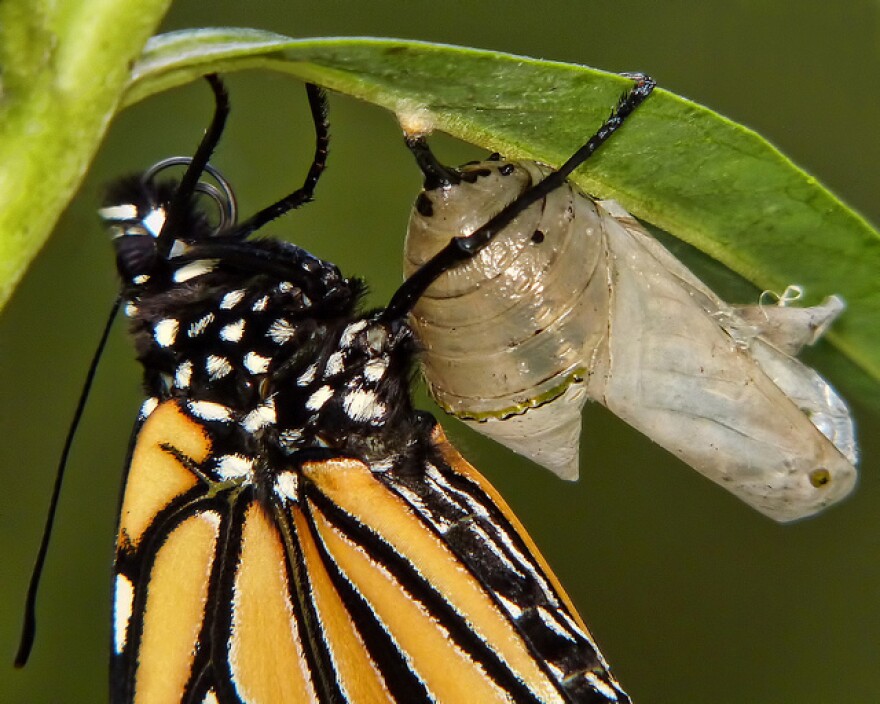By now you’re probably in the holiday thick of it, with unholy visions of Monster High dolls, Trolls, and Star Wars Stormtroopers dancing in your heads. If you’ve decided to steer another course, perhaps you’ve already sampled Nevada City’s downhome Victorian Christmas, lit by gas lamps; Grass Valley’s equally quaint Cornish Christmas; or Redding’s Lighted Christmas Parade through downtown. (Oroville, Marysville, and Paradise have parades too.) Or you plan to roll on over to the Glenn County Fairgrounds for Orland’s Avenue of Lights show—an eye-popping burst of community creativity you can just “drive thru.”

The point of all these Christmas lights is to remind us that there is light even in the deepest night. And don’t we need that, this year especially?
Yet there are winter miracles bigger than all human efforts to light the way, and to me that’s the most significant reassurance of all. This time of year I like to think that the magic of “good migrations”—the movements of all those critters who travel the globe to survive, thrive, and raise their babies, from butterflies and birds to whales—would continue on without us, should we humans disappear. Given the ongoing global impacts of climate change that hope is dimming. Still, I’m holding onto both hope and appreciation, and I’ll share that appreciation—starting, this week, with Monarch butterflies. California just happens to be a perfect place to observe and cheer on so many good migrations, experiences that offer us humans yet another chance to get in touch with the larger cycles of time and space.

When it comes to the Monarchs, Halloweenish orange-and-black beauties, the Golden State is a time-honored overwintering area, and, in certain spots, also a spring and summer breeding area. But, as the Xerces Society points out, the Monarch population here, as elsewhere, is on the verge of collapse. As recently as the 1990s some 700 million monarchs made this epic migratory flight each fall from Canada and the far northern U.S. to fir forests north of Mexico City, and more than a million monarchs spent the winter along the California Coast. Those numbers have declined by 74 percent here in California, and even more in Mexico. There are things you can do to support the survival of the mighty monarch, such as growing the native milkweed plants that the species needs for survival—and of course, going to see and celebrate them, and sharing the story with your friends.
Pacific Grove on the Monterey Peninsula is the best known of the 20 or so main places where monarch butterflies winter. There’s a big fine and potential jail term here if you’re caught “molesting” them. Once partial to Monterey pine or cypress trees for perching, monarchs these days prefer eucalyptus introduced from Australia. Adults arrive in late October and early November, their distinctive orange-and-black wings sometimes tattered and torn after migrating thousands of miles. But they still have that urge to merge, first alighting on low shrubs, then meeting at certain local trees to socialize and sun themselves during the temperate Monterey Peninsula winter before heading north to Canada to mate in the spring and then die. Their offspring metamorphose into adult butterflies the following summer or fall and—mysteriously—make their way back to the California coast without ever having been here. Milkweed eaters, the monarchs long ago figured out this diet made them toxic to bug-loving birds, who subsequently learned to leave them alone.

Even when massed in hundreds, the butterflies may be hard to spot: with wings folded, their undersides provide neutral camouflage. But if fog-damp, monarchs will spread their wings to dry in the sun and “flash”—a priceless sight for any nature mystic.
Another great place to see monarchs—often better, actually—is Natural Bridges State Beach nearby, just north of Santa Cruz, which usually attracts more.
Monarch butterfly tours (wheelchair accessible) are offered on weekends from mid-October through February—if these regal insects stick around that long. Lately they’ve been leaving earlier, sometimes by the end of December. To the north are some great tidepools, available for exploration (don't touch) at low tide. At last report leathery green fields of Brussels sprouts fringe the fragile sandy cliffs, so you get some ag tourism here too.

If you find yourself farther south this holiday season or early in the new year, look for notable populations of monarchs at the Ellwood Main Monarch Grove in Goleta, just north of Santa Barbara—some 50,000 monarchs in recent years—with the best viewing around noon, and the nearby Coronado Butterfly Preserve. Keep in mind that monarchs don’t fly on cold or cloudy days. There’s another good population at Pismo State Beach.




